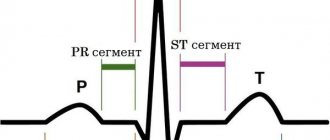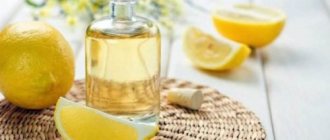Causes
There are many causes of endocarditis:
- infections;
- injuries;
- allergic diseases;
- intoxication;
- connective tissue damage.
Often endocarditis develops not as an independent disease, but as a consequence of other pathologies in the body. Both men and women are equally susceptible to the disease. It can occur at any age. Currently, about 130 types of microorganisms are known that can provoke endocarditis.
What causes rheumatism?
The cause of the development of this disease is an acute infection - active reproduction in the body of β-hemolytic streptococcus group A. This occurs as a complication after tonsillitis, pharyngitis, streptococcal cervical lymphadenitis.
First of all, rheumatism develops in individuals with a hereditary predisposition and increased sensitivity to streptococcal infection.
Streptococcus produces toxins that are dangerous to the heart, kidneys, liver, brain and other internal organs.
Symptoms
The disease may develop asymptomatically for some time. It is also characterized by acute and chronic stages. There is an extensive list of symptoms, which makes it difficult to make a correct diagnosis.
The clinical picture of endocarditis is expressed in the following symptoms:
- elevated temperature;
- chills;
- sweating;
- enlarged lymph nodes;
- signs of intoxication (weakness, headaches);
- change in skin color (pallor, spots);
- changing the shape of nails;
- arthritis of large joints;
- damage to the heart valves;
- increased thrombus formation;
- signs of pericarditis;
- systemic damage to organs (kidneys, central nervous system, etc.);
- progressive heart failure.
The manifestation of the disease is individual and depends on the general condition of the patient’s body and the severity of the pathological process.
Rheumatism (acute rheumatic fever) - symptoms and treatment
The main, and in most cases, the only manifestation of rheumatism is heart damage caused by inflammation - rheumatic carditis (carditis). With rheumatic carditis, simultaneous damage to the myocardium and endocardium occurs. This is the main syndrome that determines the severity and outcome of the disease.
In the case of carditis, adult patients experience discomfort in the heart area, interruptions in heart rhythm, and rapid heartbeat. There may be mild shortness of breath on exertion [4][5][7]. In children, this pathology is more severe: the disease begins with palpitations, shortness of breath at rest and during exercise, and constant pain in the heart area [7]. However, according to the observations of most pediatricians, children rarely present subjective complaints. Only 4-5% of pediatric patients report discomfort in the heart area at the onset of the disease. But about 12% of patients complain of tiredness and tiredness, especially after school [2][10].
With ARF, it is possible to develop rheumatic arthritis , which affects the musculoskeletal system. This is the second most common clinical manifestation of ARF. The prevalence of rheumatic arthritis varies according to various sources from 60 to 100% [3]. Patients complain of pain in large joints, inability to move, and enlargement of joints [4]. Polyarthritis can occur alone or in combination with another syndrome, most often with carditis. A feature of the disease is rapid and complete reverse development with timely administration of antirheumatic therapy.
Rheumatic lesions of the nervous system occur mainly in children. It is worth noting such a disease as “minor chorea”, or rheumatic chorea (Sydenham’s chorea, St. Vitus’s dance). It is manifested by emotional instability and violent, erratic, involuntary movements (hyperkinesis) of the upper torso, upper limbs and facial muscles [1][2].
Rheumatic chorea occurs in 12-17% of children; girls aged 6 to 15 years are more often affected [11]. The onset is gradual: patients experience tearfulness, irritability, twitching of the muscles of the trunk, limbs, and face. They complain of unsteady gait and impaired handwriting. The duration of chorea is from 3 to 6 months. It usually ends with recovery, but in some patients an asthenic state (increased fatigue, mood instability, sleep disturbance), decreased muscle tone, and slurred speech persist for a long time [1][2].
Ring-shaped erythema is a rare but specific clinical manifestation of ARF. It appears during the period of greatest activity of the process in approximately 7-17% of children. Ring-shaped erythema is a non-pruritic, pale pink rash. It does not rise above the skin level and appears on the legs, stomach, neck, and inner surface of the arms. The elements of the rash look like a thin rim that disappears when pressed. The diameter of the elements ranges from a few millimeters to the width of a child’s palm.
Subcutaneous rheumatic nodules are also a rare sign of ARF. These are round, dense, painless formations, varying in size from 2 mm to 1-2 cm. They are formed in places of bony protrusions (along the spinous processes of the vertebrae, the edges of the shoulder blades) or along the tendons (usually in the ankle joints). Sometimes they appear as clusters consisting of several nodules. Often combined with severe carditis.
Additional clinical manifestations of ARF include abdominal syndrome (acute abdominal pain) and polyserositis - inflammation of the serous membranes of several body cavities (pleura, pericardium, peritoneum, etc.). These syndromes develop in children against the background of high inflammatory activity. Abdominal syndrome, caused by peritonitis (inflammation of the peritoneum), is manifested by acute diffuse pain in the abdomen, sometimes accompanied by nausea and vomiting, bloating, stool and gas retention.
pleurisy (inflammation of the serous membrane covering the surface of the lungs) may develop Pleurisy can be dry or exudative. Dry pleurisy is an inflammation of the pleural layers with the formation of fibrin on them. Exudative - inflammation accompanied by the accumulation of exudate of various types in the pleural cavity. With ARF, dry pleurisy is more often observed. Currently, this manifestation of ARF is rarely observed. It may be clinically asymptomatic or accompanied by pain during breathing, dry cough, and sometimes a pleural friction noise is heard [5][6][7].
Treatment
The set of therapeutic measures depends on the causes of endocarditis. Treatment includes eliminating inflammation and controlling symptoms. Often the patient requires surgery to remove the affected area.
If infective endocarditis is suspected, the patient must be treated in a hospital setting. To fight the infection, the doctor prescribes medications in accordance with the identified type of virus. These can be antibiotics, antiviral drugs. Drugs to enhance immunity are also indicated.
After endocarditis, you must visit your doctor monthly for six months. In the future, inspection by a specialist should be performed at least 2 times a year.
How is rheumatism treated?
Treatment of rheumatism consists of three stages:
- Treatment in a hospital.
- Spa treatment.
- Clinical observation, treatment and prevention.
Inpatient treatment is carried out in the active phase of the disease. It implies:
- The use of medications (corticosteroids, steroid hormones, salicylates) and physiotherapeutic agents.
- Elimination of foci of streptococcal infection.
- Bed rest, the duration of which depends on the severity of the disease and lasts from one to six months.
- Balanced nutrition , which involves limiting salt, liquid and carbohydrates - sugar, white bread and potatoes.
- Physiotherapy.
Prevention
Preventive measures to prevent endocarditis include giving up bad habits, paying close attention to health, and timely treatment of emerging infections.
If you have a chronic form of the disease, you should regularly visit a cardiologist and undergo examination.
Endocarditis is a serious heart disease that can occur in both children and adults. Therefore, if your health condition worsens, it is necessary to seek help from a qualified specialist as soon as possible. At the medical center you can undergo a full examination of the body in the shortest possible time. Based on the clinical picture, the doctor will make a diagnosis and prescribe effective treatment.
Treatment in Italy
Russian Medical Server / Treatment in Italy / Center for the treatment of rare diseases in Milan / Rheumatic endocarditis - treatment in Italy
Endocarditis is inflammation of the endocardium. Endocarditis usually occurs as a manifestation of a general disease; Most often, by origin, rheumatic and septic endocarditis are distinguished; in addition, endocarditis can be syphilitic, tuberculous, traumatic, with myocardial infarction and other etiologies.
Most often, endocarditis affects the heart valves, less often the parietal endocardium of the heart cavities. Anatomical changes in the endocardium depend on the form of endocarditis. In rheumatic endocarditis, the endothelium of the heart valves is affected, followed by the imposition of thrombotic masses on them and the proliferation of granulation tissue. Wart-like formations appear on the heart valves (warty endocarditis). Septic endocarditis is characterized by ulcerative damage to the heart valves (ulcerative endocarditis) and the formation of blood clots on the damaged endocardium; Destruction of the heart valve is often observed. After any form of endocarditis, persistent changes in the structure of the heart valve may remain, disrupting its function, i.e., heart disease develops.
It should be noted that patients initially experience swelling of collagen fibers followed by a proliferative reaction. In the early stages, the surface of the valve begins to change. At the points of contact of the valves, platelets and fibrin begin to accumulate and settle, which leads to the appearance of growths (warts). The valve tissue under the growths is swollen. The tricuspid valve leaflets are subject to rheumatoid changes half as often as those of the mitral valve. Subsequently, the valves become scarred, wrinkled and deformed, and thickening or fusion of the walls is observed. This leads to the development of heart disease.
As a result of rheumatic endocarditis, valve insufficiency or stenosis may develop. Insufficiency is the incomplete closure of the valve leaflets, and stenosis is the narrowing of its opening. The most common complication is mitral valve insufficiency of the heart muscle.
Most often, rheumatic endocarditis develops between the ages of six and sixteen years, but recently there has been a decrease in the incidence in children. There are no specific features of the disease in children and adults; it progresses in exactly the same way.
According to the foci of occurrence, rheumatic endocarditis can be:
- valve;
- parietal;
- chordial.
The valve is considered the most common.
Treatment of rheumatic endocarditis is carried out by all known methods and includes taking medications and following doctor’s orders. If heart failure continues to develop, surgical intervention is performed.
The medical treatment of endocarditis involves the use of antibiotics, which are aimed at the complete destruction of beta-hemolytic streptococcus. As we have already mentioned, it is he who causes rheumatic changes in the heart. An intramuscular injection of benzylpenicillin is prescribed. It must be done four times a day for ten days.
After this, treatment with glucocorticosteroid drugs is prescribed. It is aimed at relieving inflammation of the heart muscle. Prednisolone tablets of 20 mg per day are used, you need to drink them one at a time after your morning meal. The main purpose of the patient taking these drugs is to prevent the development of heart disease.
Surgical intervention is performed only in case of unfavorable development of the disease and if the patient’s condition allows. Indications:
- formation and accumulation of pus in the endocardial area;
- heart failure continues to worsen;
- massive growths on the valve flaps;
The operation is performed by opening the chest and connecting the patient to a heart-lung machine. The heart surgeon cleans the valves and removes the affected areas. If necessary, a decision is made to replace severely damaged valves with artificial ones, but this is a separate operation.
The main complication of rheumatic endocarditis may be a heart defect. Valve insufficiency or stenosis is a rather serious ailment leading to the replacement of the valve with a mechanical one. The most common complication is mitral valve insufficiency of the heart muscle.
About 25% of patients who have had rheumatic endocarditis do not have valve defects, this is especially true in adulthood. In patients who have had this disease, the chance of developing infective endocarditis significantly increases, especially in the absence of prevention.
! Despite the fact that many of the diseases described in this section are considered incurable, the Center for the Treatment of Rare Diseases in Milan is constantly looking for new methods. Thanks to gene therapy, it has been possible to achieve outstanding results and completely cure some rare syndromes.
Contact a consultant on the website or leave a request - this way you can find out what methods Italian doctors offer. Perhaps this disease has already been treated in Milan.
Reasons for the development of the disease
An infectious disease is usually caused by streptococci, Escherichia coli or Pseudomonas aeruginosa, staphylococci, Proteus and other opportunistic microorganisms.
Rheumatoid endocarditis, as a rule, is a consequence of existing rheumatism.
The likelihood of developing the disease is high in those people who have already suffered from endocarditis, have hypertrophic cardiomyopathy, suffer from immunodeficiency or more AIDS. The pathology can also affect drug addicts who do not comply with sanitary standards when performing injections into a vein.
Endocarditis can rarely develop as a result of heart defects, both congenital and acquired, or the installation of artificial valves.
How is endocarditis treated?
To treat an infectious type of disease, large doses of antibiotics are prescribed. Immunomodulators, glucorticosteroids, kuraltil, aspirin, and heparin are also indicated for patients. Ultraviolet irradiation of blood gives a good effect in the treatment of septic endocarditis.
When antibiotics do not give a positive result, surgical treatment may be indicated. During the operation, doctors remove the affected valve and place an artificial implant in its place.
If the disease is treated on time, stable remission can be achieved for up to 5 years. However, relapse can have serious consequences.
If the cause of endocarditis is rheumatism, the main type of therapy is sodium salicylic (aspirin, amidopyrine), glucocorticoids.
All patients are advised to eat a salt-restricted diet and take B vitamins.









